Mark Kliger
Beyond Weak Perspective for Monocular 3D Human Pose Estimation
Sep 14, 2020
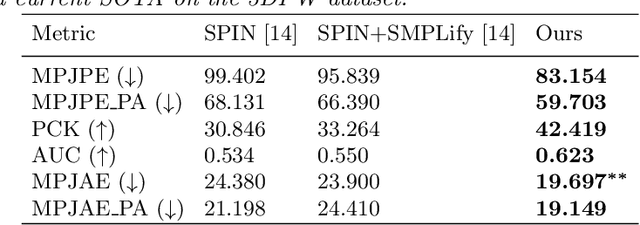
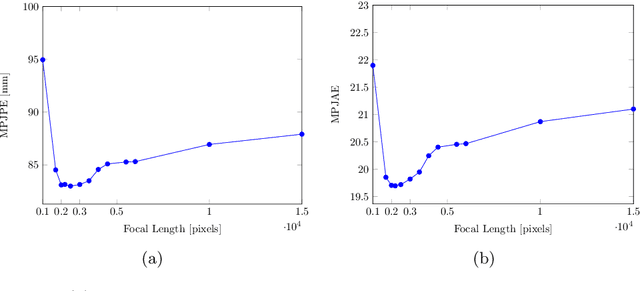

Abstract:We consider the task of 3D joints location and orientation prediction from a monocular video with the skinned multi-person linear (SMPL) model. We first infer 2D joints locations with an off-the-shelf pose estimation algorithm. We use the SPIN algorithm and estimate initial predictions of body pose, shape and camera parameters from a deep regression neural network. We then adhere to the SMPLify algorithm which receives those initial parameters, and optimizes them so that inferred 3D joints from the SMPL model would fit the 2D joints locations. This algorithm involves a projection step of 3D joints to the 2D image plane. The conventional approach is to follow weak perspective assumptions which use ad-hoc focal length. Through experimentation on the 3D Poses in the Wild (3DPW) dataset, we show that using full perspective projection, with the correct camera center and an approximated focal length, provides favorable results. Our algorithm has resulted in a winning entry for the 3DPW Challenge, reaching first place in joints orientation accuracy.
Generative Low-Shot Network Expansion
Oct 19, 2018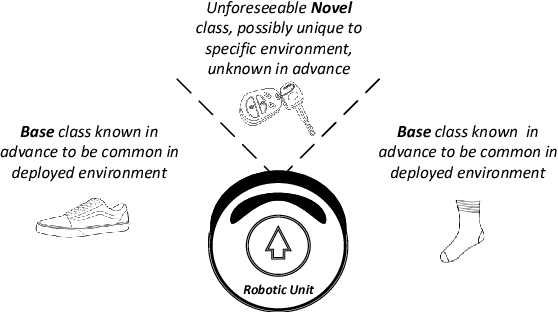
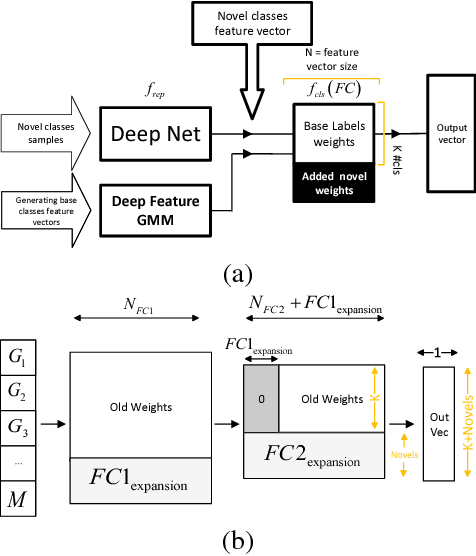
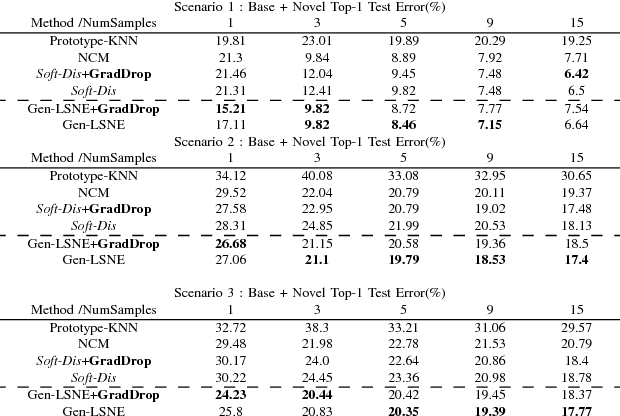
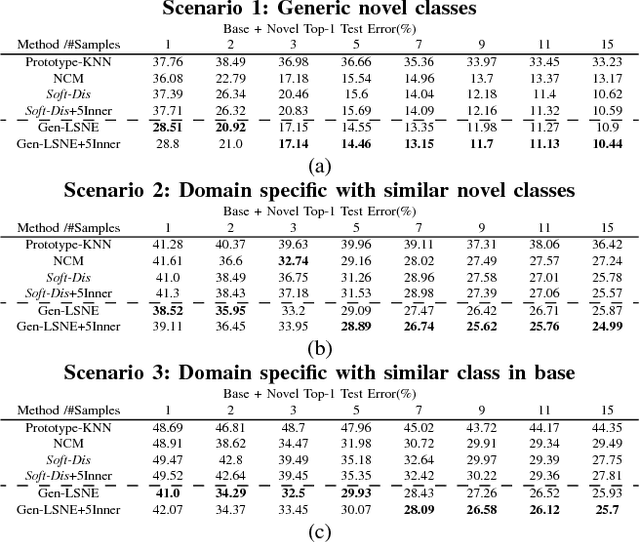
Abstract:Conventional deep learning classifiers are static in the sense that they are trained on a predefined set of classes and learning to classify a novel class typically requires re-training. In this work, we address the problem of Low-Shot network expansion learning. We introduce a learning framework which enables expanding a pre-trained (base) deep network to classify novel classes when the number of examples for the novel classes is particularly small. We present a simple yet powerful hard distillation method where the base network is augmented with additional weights to classify the novel classes, while keeping the weights of the base network unchanged. We show that since only a small number of weights needs to be trained, the hard distillation excels in low-shot training scenarios. Furthermore, hard distillation avoids detriment to classification performance on the base classes. Finally, we show that low-shot network expansion can be done with a very small memory footprint by using a compact generative model of the base classes training data with only a negligible degradation relative to learning with the full training set.
Novelty Detection with GAN
Feb 28, 2018

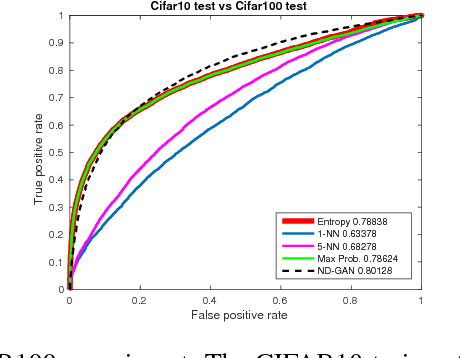

Abstract:The ability of a classifier to recognize unknown inputs is important for many classification-based systems. We discuss the problem of simultaneous classification and novelty detection, i.e. determining whether an input is from the known set of classes and from which specific class, or from an unknown domain and does not belong to any of the known classes. We propose a method based on the Generative Adversarial Networks (GAN) framework. We show that a multi-class discriminator trained with a generator that generates samples from a mixture of nominal and novel data distributions is the optimal novelty detector. We approximate that generator with a mixture generator trained with the Feature Matching loss and empirically show that the proposed method outperforms conventional methods for novelty detection. Our findings demonstrate a simple, yet powerful new application of the GAN framework for the task of novelty detection.
Revealing social networks of spammers through spectral clustering
Apr 30, 2013
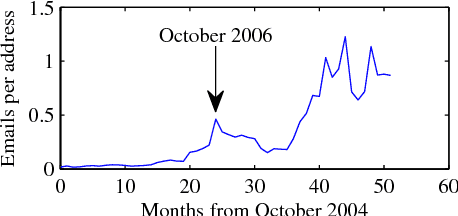
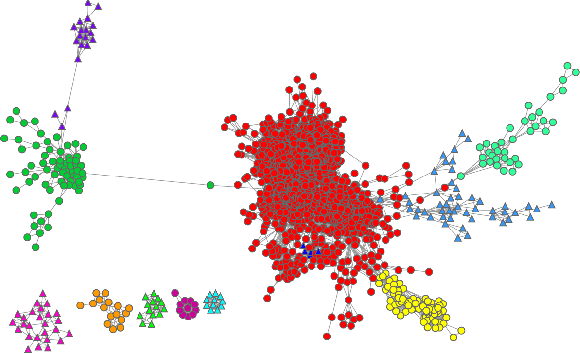
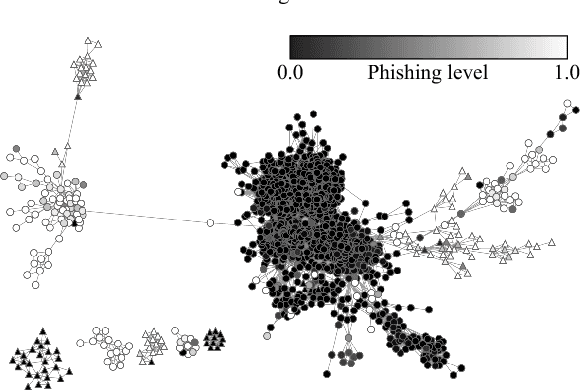
Abstract:To date, most studies on spam have focused only on the spamming phase of the spam cycle and have ignored the harvesting phase, which consists of the mass acquisition of email addresses. It has been observed that spammers conceal their identity to a lesser degree in the harvesting phase, so it may be possible to gain new insights into spammers' behavior by studying the behavior of harvesters, which are individuals or bots that collect email addresses. In this paper, we reveal social networks of spammers by identifying communities of harvesters with high behavioral similarity using spectral clustering. The data analyzed was collected through Project Honey Pot, a distributed system for monitoring harvesting and spamming. Our main findings are (1) that most spammers either send only phishing emails or no phishing emails at all, (2) that most communities of spammers also send only phishing emails or no phishing emails at all, and (3) that several groups of spammers within communities exhibit coherent temporal behavior and have similar IP addresses. Our findings reveal some previously unknown behavior of spammers and suggest that there is indeed social structure between spammers to be discovered.
Adaptive Evolutionary Clustering
Feb 19, 2013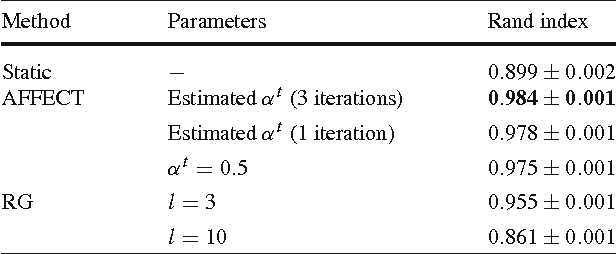
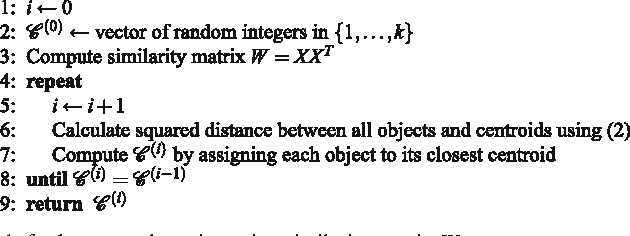
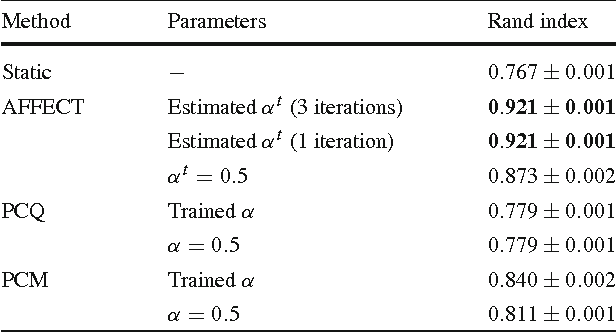
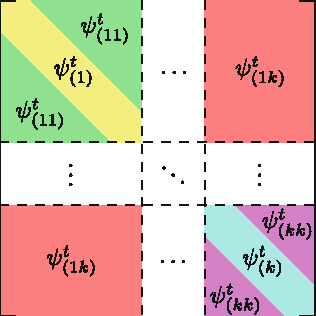
Abstract:In many practical applications of clustering, the objects to be clustered evolve over time, and a clustering result is desired at each time step. In such applications, evolutionary clustering typically outperforms traditional static clustering by producing clustering results that reflect long-term trends while being robust to short-term variations. Several evolutionary clustering algorithms have recently been proposed, often by adding a temporal smoothness penalty to the cost function of a static clustering method. In this paper, we introduce a different approach to evolutionary clustering by accurately tracking the time-varying proximities between objects followed by static clustering. We present an evolutionary clustering framework that adaptively estimates the optimal smoothing parameter using shrinkage estimation, a statistical approach that improves a naive estimate using additional information. The proposed framework can be used to extend a variety of static clustering algorithms, including hierarchical, k-means, and spectral clustering, into evolutionary clustering algorithms. Experiments on synthetic and real data sets indicate that the proposed framework outperforms static clustering and existing evolutionary clustering algorithms in many scenarios.
* To appear in Data Mining and Knowledge Discovery, MATLAB toolbox available at http://tbayes.eecs.umich.edu/xukevin/affect
 Add to Chrome
Add to Chrome Add to Firefox
Add to Firefox Add to Edge
Add to Edge